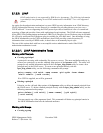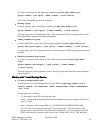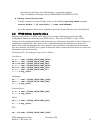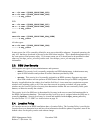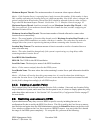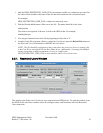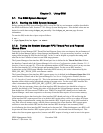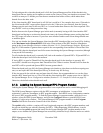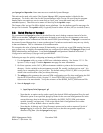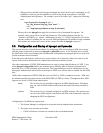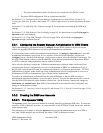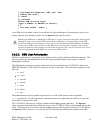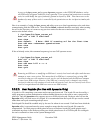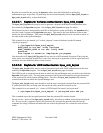Chapter 3. Using SSM
3.1. The SSM System Manager
3.1.1. Starting the SSM System Manager
Before starting the SSM System Manager (SM), review the SM key environment variables described in
the HPSS Installation Guide, Section 3.7.10: Storage System Management. If the default values are not
desired, override them using the hpss_set_env utility. See the hpss_set_env man page for more
information.
To start the SM, invoke the rc.hpss script as follows:
% su -
% /opt/hpss/bin/rc.hpss -m start
3.1.2. Tuning the System Manager RPC Thread Pool and Request
Queue Sizes
Tuning the System Manager RPC Thread Pool and Request Queue sizes can improve the performance of
both the System Manager and its clients (hpssgui and hpssadm). It is not necessary, however, to do the
tuning when bringing up SSM for the first time. In fact, it can be helpful to postpone the tuning until
after the site has a chance to learn its own SSM usage patterns.
The System Manager client interface RPC thread pool size is defined in the Thread Pool Size field on
the Interface Controls tab of the System Manager's Core Server Configuration window (Section 5.1.1.2:
Interface Controls on page 92). This is the maximum number of RPCs that can be active at any one time
for the client interface (i.e. all the hpssgui and hpssadm clients). For the server RPC interface
(connections to the SSM System Manager from other HPSS servers), this value is determined by the
HPSS_SM_SRV_TPOOL_SIZE environment variable.
The System Manager client interface RPC request queue size is defined in the Request Queue Size field
on the Interface Controls tab of the System Manager's Core Server Configuration window (Section
5.1.1.2: Interface Controls on page 92). This is the maximum number of RPC requests from hpssgui and
hpssadm clients which can be queued and waiting to become active. For the server RPC interface this
value is determined by the HPSS_SM_SRV_QUEUE_SIZE environment variable.
Ideally, if the site runs many clients, the client interface RPC thread pool size should be as large as
possible; the default is 100. Testing this value at 300 showed the System Manager memory size more
than doubled on AIX from around 32MB to over 70MB. The larger RPC thread pool size makes the
System Manager much more responsive to the many clients but also requires it to use more memory.
Experimentation shows that leaving the client interface RPC thread pool size at 100 and leaving the
client interface RPC request queue size at its default (600) works pretty well for up to about 40 clients.
During further experimentation, setting the client interface RPC request queue size to 1000 resulted in
very little effect on memory usage; with 40 clients connected, the client interface RPC request queue
used never went above about 500, but the client interface RPC thread pool was constantly filled.
Avoid allowing the client interface RPC thread pool to become full. When this happens, new RPCs will
be put into the client interface RPC request queue to wait for a free thread from the thread pool. This
makes the client response appear slow, because each RPC request is having to wait its turn in the queue.
HPSS Management Guide November 2009
Release 7.3 (Revision 1.0) 31



